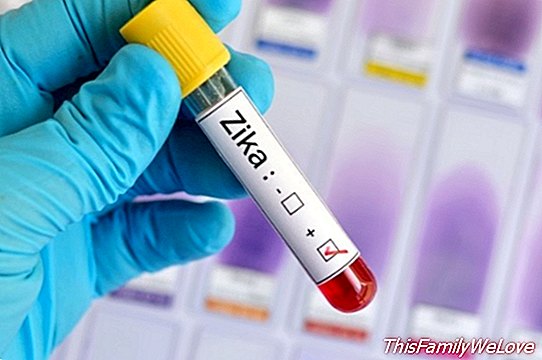The Zika virus and the 10 global epidemics that haunt us

The Director General of the World Health Organization (WHO), Dr. Margaret Chan, has stated that the Zika virus it is an "epublic health mergency of international importance (ESPII). "The symptoms of this disease are very similar to those of the flu.
The first meeting of the Emergency Committee convened by the Director General of WHO to discuss the increase in cases of microcephaly and its possible relationship with the parallel expansion of Zika virus, took place by videoconference. After Brazil, France, the United States and El Salvador provided information on the association between microcephaly and Guillain-Barré syndrome with the Zika virus, and the Committee making a series of recommendations, Dr. Margaret Chan declared that the Zika is an ESPII Emergency of Public Health of International Importance.
The Zika virus: what it is and how to confront it
Although the disease caused by the Zika virus is in 'boom', is not the first time it appears in the radars of health organizations. The CDC, the US Centers for Disease Control and Prevention, has already declared an alert for the virus in May 2014 due to the alarming outbreak of the Zika that French Polynesia suffered from October 2013. Although the symptoms are not too different from those of the common flu, it is the possible connection of the virus with cases of microcephaly that worries the health authorities.
The disease is transmitted exclusively through the bite of the Aedes aegypti mosquito (cousin of the Tigre mosquito, which is present in our country). The main symptoms, which can last between 2 and 7 days, are mild fever, muscle and headaches, rashes, and conjunctivitis. There is no cure or vaccine and, as with the flu, the only thing that can be done is to treat the symptoms until they disappear. The difference with the flu is that people affected by Zika do not transmit the disease, and only one in four have the symptoms.
As was already observed in the 2013 Zika outbreak in French Polynesia, the health authorities of Brazil in 2015 reported an increase in Guillain-Barré syndrome, an autoimmune disease associated with the spread of the virus. 80% of those affected by the syndrome recover.
The risk of the Zika virus for Spain and its prevention
As already mentioned, the Zika virus is transmitted by the bite of a mosquito of the genus Aedes, which is not found on the European continent. However, the Tigre mosquito, of the same genus, is an invasive species that has been established in Spain in Levante, Catalonia and the Basque Country. This deadly mosquito is a vector of diseases such as dengue fever, yellow fever, Chikungunya fever, or West Nile virus disease. Furthermore, in the event that biting an affected person, it would also be a Zika vector.
According to the Ministry of Health, in 2014 almost 800,000 Spaniards traveled to Latin America and more than one and a half million foreign tourists who visited our country in the same year came from this continent. Given that 75% of the population affected by the Zika virus does not present symptoms, the risk that one of them travels to any of the 14 Spanish provinces where the Tigre mosquito is found is real, although very low during the months of winter.
The WHO believes that trade or travel with countries affected by the Zika virus should not be restricted (although it does not recommend it in the case of pregnant women, to prevent possible microcephaly in the fetus), but warns that they should be Take measures to prevent transmission. The Institute of Integral Dermatology reports that it is most effective to prevent bites by using repellents containing Icaridine, IR3535, or DEET.
If you have to travel to affected countries (or you are in one of the provinces 'colonized' by the Tigre mosquito), in addition to the use of appropriate repellents, you must take another series of measures such as wearing light-colored clothing that covers the largest possible body part and avoid the perfume (so as not to attract mosquitoes); Do not go out without repellent in the early hours or at dusk; close doors and windows and sleep with mosquito netting; avoid areas of standing water and cover any container where water can accumulate.
Other potential epidemics
Although now it is the Zika virus that holds the most headlines, not long ago it was the Ebola virus the protagonist of the media landscape. Along with those caused by Zika and Ebola, eight more diseases are at risk of escalation to the category of epidemics:
- Chikunguya fever
- Nipah virus disease
- Lassa fever
- Marburg virus disease
- Crimean-Congo haemorrhagic fever
- Respiratory syndromes due to corovirus MERS and SARS
- Rift Valley fever (RVF)
- Severe fever with thrombocytopenia (SFTSV)
All these diseases have a series of factors in common that make them perfect candidates for future epidemics. All are viral diseases, most have high mortality rates and there is no known vaccine against them. Symptoms can vary from fever and headache (Ebola and Chikunguya and Rift Valley fevers, among others) to breathing difficulties (MERS and SARS, and Nipah virus) and hemorrhages (Maburg virus and Crimean fever) -Congo).
Many of these diseases are already endemic in their continents of origin, such as Lassa fever in West Africa and Crimean-Congo fever in Africa, the Balkans, the Middle East and Asia, below 50º north latitude. Currently, the continents most affected by epidemics are Africa, Asia and America, which coincides with those affected by these new threats.
Marga Wesolowski




